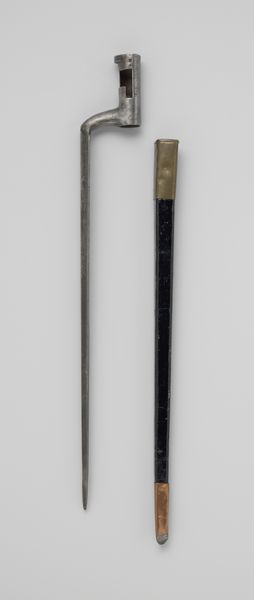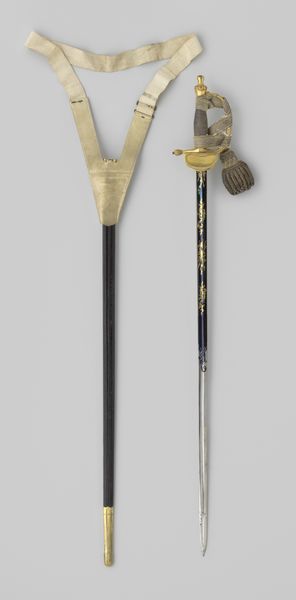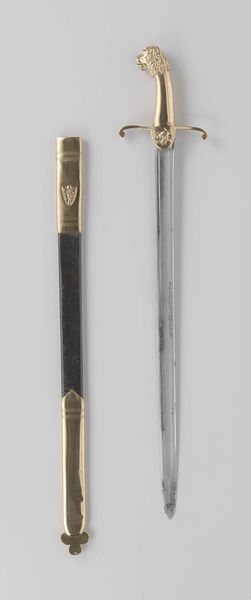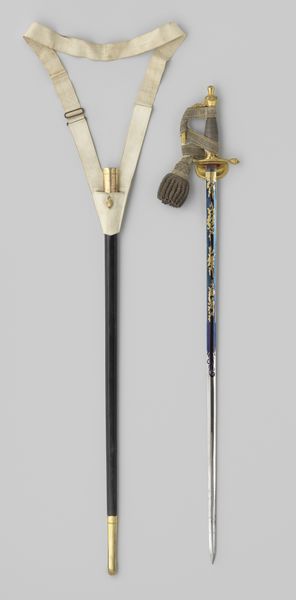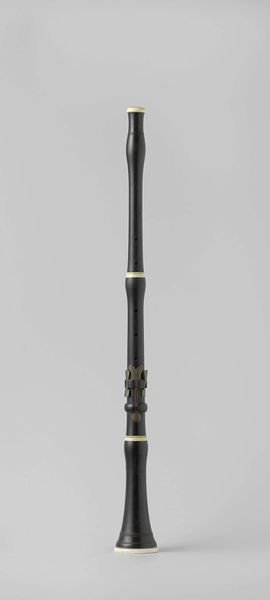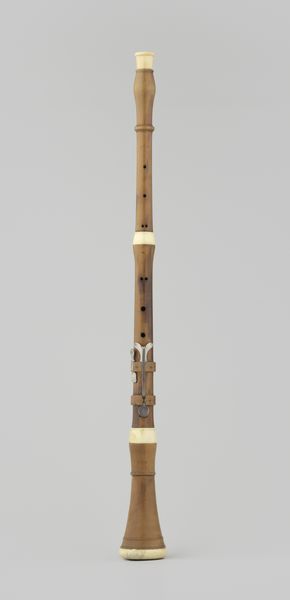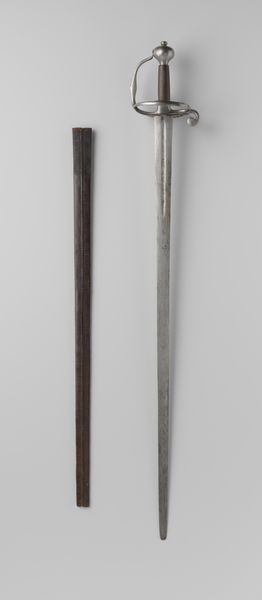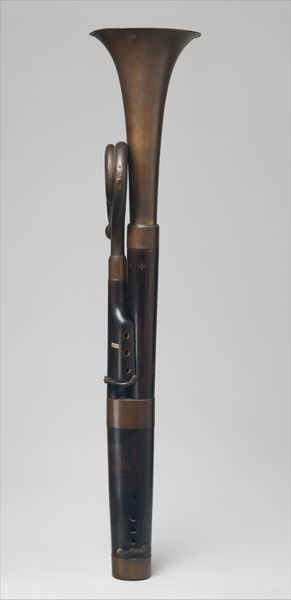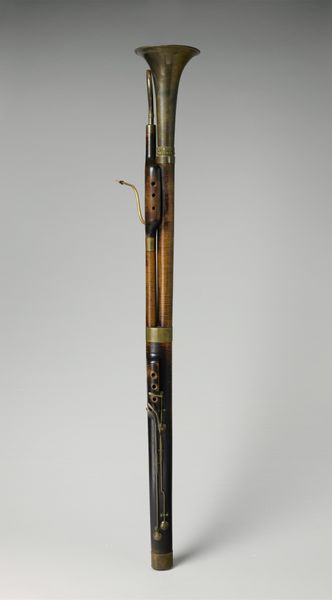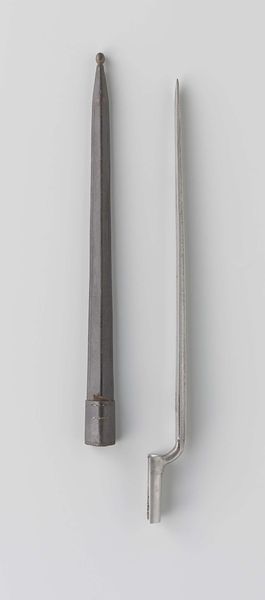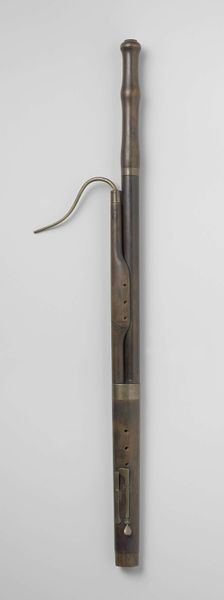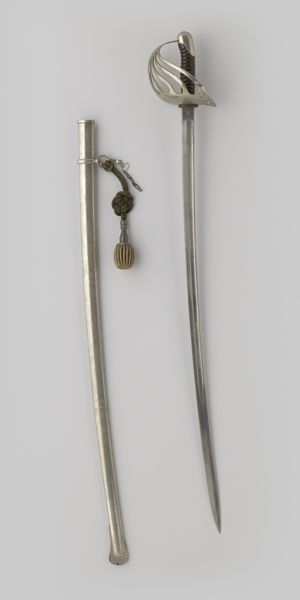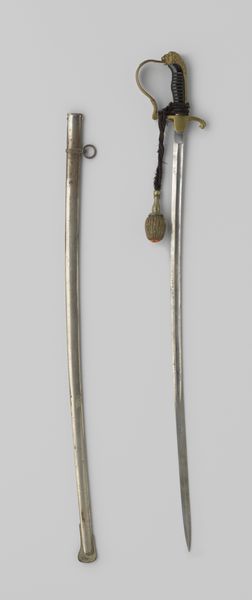
brass, metal, sculpture
#
portrait
#
brass
#
weapon
#
metal
#
sculpture
#
history-painting
Dimensions: length 88.5 cm, length 69 cm, width 15.5 cm, length cm, width cm
Copyright: Rijks Museum: Open Domain
Editor: Here we have a display of "Sabels met schede voor tamboer-majoor," or Sabers with Sheaths for Drum Major, crafted sometime between 1820 and 1850. These are made of brass and metal, and are currently located in the Rijksmuseum collection. I'm really struck by how the metallic elements work together, creating this streamlined presentation. What do you see when you look at this work? Curator: I see a study in contrasts and symmetries. The rigid verticality is bisected by the horizontal cross-guard. Note the deployment of contrasting color tones, especially the dark leather juxtaposed against the gleam of the golden metallic components. Also, observe how the lion head pommels act as counterpoints, their meticulously sculpted forms providing textural interest. Editor: That’s fascinating. Do you think the use of a lion for the hilt had any symbolic meaning in the period it was made? Curator: It most certainly would. The lion is a common symbol denoting strength, courage, and royalty. Its employment in this case seems intentional and directly related to its function as a ceremonial weapon. We must consider how form reinforces function. Is it merely ornamental, or does it, in fact, embody some greater value? Note too how the sheen on the metalwork, as opposed to the flatness of the sheath, creates its own symbolism and set of visual hierarchies. Editor: It’s incredible how much one can discern simply by observing its design. Now, I feel as though I have a deeper understanding of this saber, seeing the layers within its visual and material components. Curator: Indeed. By isolating each feature, it is possible to assemble a matrix that explicates how symbolic weight resides in both form and material. I have benefited too from thinking aloud.
Comments
No comments
Be the first to comment and join the conversation on the ultimate creative platform.
